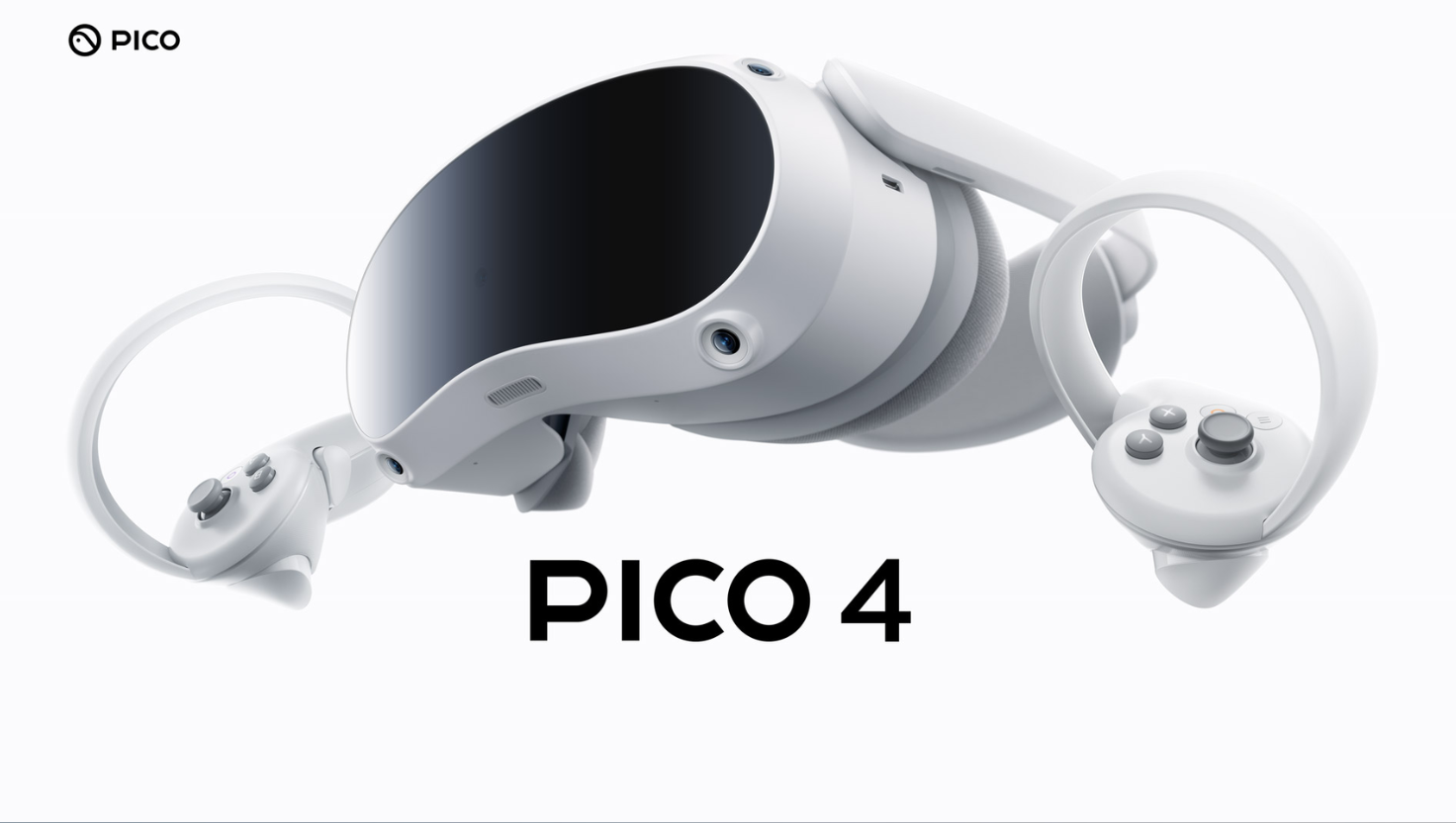Introduction: The Pico 4 in the 2024/2025 VR Landscape
Released in late 2022, the Pico 4 promised premium specs at a competitive price (€429 for 128GB). But with Meta’s Quest 3 dominating and Apple Vision Pro entering the spatial computing race, its relevance needs scrutiny. In 2024, ByteDance’s headset faces critical questions: Can its hardware still compete? Is its ecosystem robust enough? And does it deliver Pico 4 worth it 2024/2025 value? We dissect every layer for VR enthusiasts .
💆♂️ Design & Comfort: Lightweight but Flawed Ergonomics
- Build & Weight: At 586g, it’s heavier than Quest 3 (515g), but rear-battery distribution balances weight effectively. The ski-goggle design is slimmer than Quest 2, reducing neck strain .
- Ergonomics: The rigid headstrap with a rear dial offers customizable fit, but the default foam facial interface causes discomfort and sweat buildup during long sessions. Pressure points on the nose/forehead are common .
- Adjustments: Motorized IPD (62–72mm) ensures precise alignment, a standout feature for its class. Magnetic face cushions allow swaps, though third-party options (like AMVR) are recommended for comfort .
- Durability: Early batches had lens defects, but current units show resilience. The front glass attracts fingerprints and scratches easily, however .
Verdict: Comfortable for 1–2 hours, but extended use demands mods.
👓 Display & Optics: Sharp Resolution, Optical Quirks
- Resolution & Clarity: Dual 2160×2160 LCD panels (1200 PPI) outshine Quest 2’s 1832×1920. Text is crisp, and the “screen door effect” is minimal .
- Lenses & FOV: Pancake lenses enable a slim profile and 105° field of view (vs. Quest 2’s 90°). However, edge blur and a narrow “sweet spot” force users to reposition often. God rays and ghosting plague high-contrast scenes .
- Refresh Rate: 90Hz mode (enabled in Settings) is smooth but defaults to 72Hz. No 120Hz support hurts competitive gamers .
| Feature | Pico 4 | Quest 3 |
|---|---|---|
| Resolution | 2160×2160 per eye | 2064×2208 per eye |
| FOV | 105° | 110° |
| Lens Tech | Pancake (edge blur) | Pancake (edge clarity) |
| Passthrough | 16MP color (grainy) | 18MP with depth sensor |
⚙️ Performance & Hardware: Solid but Outdated
- Chipset & Memory: Snapdragon XR2 (same as Quest 2) paired with 8GB RAM handles most games smoothly. Multitasking excels versus Quest 2’s 6GB .
- Tracking: Five-camera inside-out tracking supports 10×10m play areas. Hand tracking exists but is unreliable—controllers remain essential. New Ultra models (2024) use ring-free designs with improved haptics .
- Connectivity: Wi-Fi 6 and Bluetooth 5.1 enable stable PC VR streaming. No DisplayPort or 3.5mm jack limits wired options .
Real-World Use: Walkabout Mini Golf runs flawlessly, but Assassin’s Creed Nexus stutters in crowded scenes .
🎮 Content & Ecosystem: The Achilles’ Heel
- Standalone Library: ~250 apps (vs. 500+ on Quest). Missing exclusives like Beat Saber, Resident Evil 4, and Asgard’s Wrath 2. Fitness apps (Pico Fit) and Just Dance are highlights .
- PC VR Savior: SteamVR support via Virtual Desktop ($20) or Streaming Assistant (free) unlocks 4,000+ titles like Half-Life: Alyx. Wireless performance impresses with Wi-Fi 6 .
- Platform Uncertainty: 2023 layoffs and canceled projects (e.g., a Beat Saber rival) signal reduced investment. Meta’s Horizon OS dwarfs Pico OS in developer support .
For whom? Ideal for PC VR users; frustrating for standalone-only buyers.
🔋 Battery Life & Portability: Short-Lived Sessions
- Battery Capacity: 5,300mAh battery lasts 2–2.5 hours in mixed use (gaming drains it in 1.5 hours). Quest 3 averages 2.2 hours, while Quest 3S lasts longer .
- Charging: USB-C fast charging reaches 65% in 60 minutes. No hot-swappable batteries, though third-party straps (e.g., BoboVR) add external packs .
- Portability: Compact design fits backpacks, but no included case. Glasses spacer and nose pad enhance accessibility .
💰 Price & Value in 2024/2025: Budget Contender?
- Current Pricing:
- 128GB: €429 (~$465)
- 256GB: €499 (~$540)
(Not sold officially in the US; import via Newegg/EBay adds fees) . - Vs. Competitors:
- Quest 3 (128GB): $499
- Quest 3S (128GB): $299
- Value Proposition: A steal for PC VR users needing high-res displays. Standalone gamers get better ROI from Quest 3S’s content library .
⚖️ Pros & Cons: Who Should Buy It?
Pros
- ✅ Best-in-class resolution under $500.
- ✅ Superior comfort vs. Quest 2 (with mods).
- ✅ Seamless wireless PC VR.
- ✅ Motorized IPD and 105° FOV.
Cons
- ❌ Limited standalone library.
- ❌ Subpar passthrough vs. Quest 3.
- ❌ Battery life <3 hours.
- ❌ No U.S. support or warranty.
Buy If You:
- Prioritize PC VR over standalone.
- Seek high resolution on a budget.
- Live outside the U.S. (EU/UK/Asia).
Avoid If You:
- Want “plug-and-play” standalone games.
- Need advanced MR or fitness apps.
- Value long-term software updates.
🏁 Conclusion: A Niche Gem in 2025
The Pico 4 worth it 2024/2025 question hinges on use cases:
- For PC VR Users: Yes. Its display, comfort, and wireless streaming deliver exceptional value under $500.
- For Standalone Gamers: No. Quest 3S offers better content, support, and battery at $299 .
ByteDance’s uncertain commitment casts doubt on its future, but as a PC-powered headset, the Pico 4 remains a compelling budget alternative.
Your Move: Tried the Pico 4? Share your 2024/2025 experiences below! 👇
Sources
[1] Pico 4 Review: Is It Still Worth It? (2023)
[3] Pico 4 Worth It? 2024 Update
[5] Pico 4 Review: Outdated Before It Got Good
[7] Pico 4 Ultra Review: Quest 3 Unmatched
[8] Meta Quest 3 vs Pico 4 Ultra
[9] Pico 4 Review: VR Expert
[10] Pico 4 vs Quest 3: Business Comparison


















